The Bloodhound: An Olfactory Odyssey into the World’s Most Remarkable Nose
Step into the fascinating world of the Bloodhound, a creature whose very existence is a testament to the power of scent. Far more than just a dog, this majestic hound possesses an olfactory system so profound it has shaped human history, aided justice, and captivated animal lovers for centuries. From its distinctive wrinkled brow to its melodious bay, the Bloodhound is a living legend, a master tracker whose dedication to a trail is unparalleled in the animal kingdom. Prepare to delve deep into the science, history, and unique charm of this extraordinary canine.
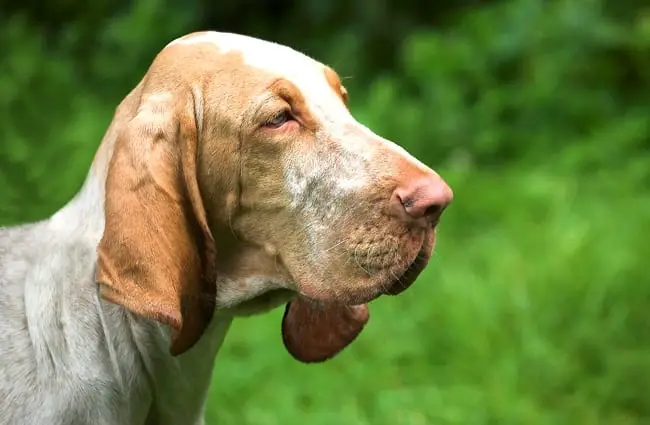
A Glimpse into the Bloodhound’s World: Basic Facts
Before we embark on a deeper scientific exploration, let us first acquaint ourselves with the fundamental characteristics that define this magnificent breed.
Physical Characteristics: Built for the Trail
The Bloodhound’s appearance is as iconic as its abilities. These are large, powerful dogs, typically weighing between 80 to 110 pounds (36 to 50 kg) and standing 23 to 27 inches (58 to 69 cm) at the shoulder. Their most striking features include a long, noble head adorned with deeply set, diamond-shaped eyes that often appear to gaze with an air of profound thought. The skin on their face and neck is remarkably loose and wrinkled, forming deep folds and dewlaps that serve a crucial purpose in scent detection. Their exceptionally long, pendulous ears frame the face, further enhancing their unique profile. A strong, muscular body, coupled with a deep chest and well-boned legs, provides the stamina required for long hours on the trail. Their coat is short, dense, and comes in colors such as black and tan, liver and tan, or red.
Temperament: Gentle Giant with a Purpose
Despite their imposing size and formidable tracking skills, Bloodhounds are renowned for their gentle, docile, and affectionate nature. They are typically good-natured with children and other animals, making them surprisingly amiable companions. However, when a Bloodhound is on a scent, its personality undergoes a remarkable transformation. All other stimuli fade, and the dog becomes singularly focused, driven by an instinctual imperative to follow the trail. This single-mindedness, while invaluable for their work, means they can be oblivious to their surroundings, including human commands, once their nose is engaged.

Habitat and Distribution: A Domesticated Wanderer
It is important to clarify that Bloodhounds are domesticated animals, bred and raised by humans for specific purposes. Therefore, one would not “find a Bloodhound in the wild” in the same way one might encounter a wolf or a fox. Their habitat is primarily within human homes, kennels, and working environments such as police departments, search and rescue organizations, and private residences. They thrive in environments where they receive consistent care, training, and opportunities to exercise their incredible scenting abilities. While they can adapt to various climates, their short coat means they are not ideally suited for extreme cold without protection, and their deep skin folds require attention in humid conditions to prevent skin issues.
The Science Behind the Scent: Unraveling Olfactory Superpowers
The Bloodhound’s legendary tracking ability is not merely folklore; it is a marvel of biological engineering. Understanding the anatomy and physiology behind their nose reveals why they are truly in a league of their own.
Anatomy of a Nose: Why Bloodhounds Excel
The secret to the Bloodhound’s unparalleled olfactory prowess lies within its nasal cavity. Unlike the human nose, which possesses approximately 5 million olfactory receptors, a Bloodhound’s nose can boast up to 300 million. This vast number of receptors allows them to detect and differentiate between an astonishing array of scents. Furthermore, their nasal passages are structured to separate the air used for breathing from the air used for smelling, allowing them to continuously analyze scents without interruption. The vomeronasal organ, also known as Jacobson’s organ, located on the roof of their mouth, provides an additional layer of chemoreception, detecting pheromones and other chemical signals that are imperceptible to humans.
Beyond the internal mechanics, the Bloodhound’s external features also play a crucial role. Their long, pendulous ears drag on the ground, sweeping scent particles towards their nose. The loose, wrinkled skin on their face and neck creates additional surface area, trapping scent molecules and holding them close to the nose, effectively creating a “scent funnel.” This combination of internal and external adaptations makes them the ultimate scent detection machine.
Tracking Prowess: A Legacy of Detection
Bloodhounds do not simply smell; they interpret a complex tapestry of odors. They can follow a scent trail that is days old, even across challenging terrains and through crowded environments where countless other smells might confuse a less specialized nose. They are adept at distinguishing individual human scents, a skill that has made them indispensable in law enforcement for trailing fugitives and in search and rescue operations for locating lost individuals. Their method involves meticulously following the microscopic skin cells (rafts of epithelial cells) that every person sheds constantly, along with other associated odors. This dedication to a specific scent, often referred to as “cold trailing,” is what sets them apart.

Evolutionary Journey: From Ancient Hounds to Modern Heroes
The Bloodhound’s lineage is as rich and deep as its scenting ability, tracing back through centuries of careful breeding and selection.
Tracing the Lineage: A Breed Steeped in History
The precise origins of the Bloodhound are somewhat shrouded in the mists of time, but their ancestry is believed to date back to ancient Greece or Rome. However, the breed as we know it today was largely developed in medieval Europe, particularly in the monasteries of Belgium and France. Monks, most notably those associated with the Abbey of St. Hubert, meticulously bred these hounds for their exceptional scenting abilities. These “St. Hubert Hounds” were primarily used for tracking deer and other game, ensuring a reliable food source. Over time, these hounds were brought to England, where they were further refined and became known as “Bloodhounds,” a name thought to derive from “blooded hound,” signifying a hound of pure or aristocratic blood, rather than an association with blood itself.
Adaptations for Survival (and Service)
The Bloodhound’s evolution has been a story of selective breeding for a singular purpose: scent tracking. Every physical trait, from their powerful legs and deep chest for endurance to their unique facial structure and ears, has been honed over generations to maximize their ability to follow a trail. This specialization made them invaluable to humans, ensuring their survival and propagation. Their gentle temperament, while seemingly contradictory to their powerful build, is also an evolutionary advantage, making them manageable and cooperative partners in their tracking endeavors.

Life Cycle and Reproduction: The Next Generation of Trackers
The continuation of the Bloodhound lineage involves a typical canine reproductive cycle, with specific considerations for this large breed.
Mating Rituals and Gestation
Like most domestic dogs, Bloodhounds reach sexual maturity between 6 to 12 months of age, though responsible breeders typically wait until dogs are fully mature, often around two years old, before breeding. The female Bloodhound experiences estrus (heat) approximately twice a year. Mating involves a courtship period, followed by copulation. The gestation period for Bloodhounds is typically around 63 days, similar to other dog breeds.
Raising a Litter: From Pups to Professionals
Bloodhound litters can range in size, often averaging between 8 to 10 puppies, though larger litters are not uncommon. Newborn puppies are entirely dependent on their mother for warmth, nourishment, and stimulation. They develop rapidly, opening their eyes and beginning to explore their surroundings within a few weeks. Early socialization and exposure to various sights, sounds, and smells are crucial for developing well-adjusted Bloodhounds. For those destined for tracking work, early scent games and positive reinforcement training can begin even at a young age, gently nurturing their innate abilities. Responsible breeders prioritize the health and temperament of both parents and puppies, ensuring the continuation of healthy, well-adjusted Bloodhounds.
Diet and Nutrition: Fueling the Scent Machine
As domesticated animals, the Bloodhound’s diet is entirely controlled by humans. Proper nutrition is paramount for their health, stamina, and overall well-being.
What Bloodhounds Eat: A Balanced Approach
A Bloodhound’s diet should consist of high-quality commercial dog food formulated for large breeds, or a carefully balanced raw or home-cooked diet under veterinary guidance. Given their size and potential for activity, their food should be rich in protein to support muscle development and maintenance, and contain appropriate levels of fats and carbohydrates for energy. Essential vitamins and minerals are also crucial for bone health, especially during their rapid growth phase as puppies. It is vital to monitor portion sizes to prevent obesity, which can exacerbate joint problems common in large breeds. Foods to avoid include chocolate, grapes, raisins, onions, garlic, and xylitol, all of which are toxic to dogs.
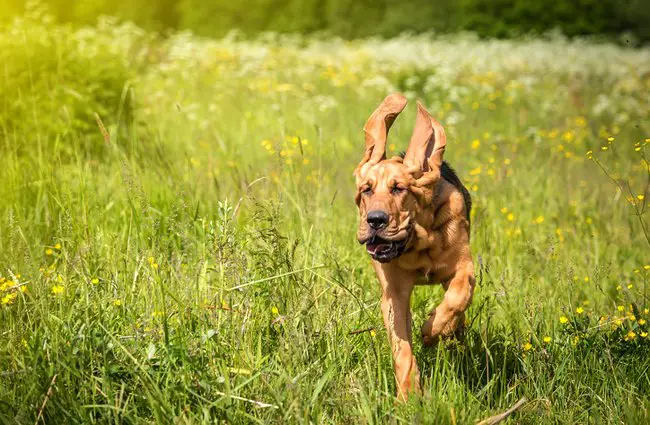
Ecosystem Role and Interactions: A Human-Centric Contribution
Unlike wild animals that occupy specific niches within natural ecosystems, the Bloodhound’s primary “ecosystem” is intertwined with human society.
Impact on the Environment: A Domesticated Footprint
Bloodhounds, as domesticated animals, do not directly contribute to wild ecosystems in the same way a predator or herbivore would. Their impact is largely indirect, stemming from human activities related to their care, breeding, and deployment. For example, the land used for kennels, training facilities, or the resources consumed for their food and veterinary care represent their environmental footprint. However, their role in search and rescue can indirectly contribute to human safety, which in turn can influence human interaction with natural environments.
Interactions with Other Animals: A Gentle Disposition
Bloodhounds generally possess a gentle and tolerant disposition, making them typically good with other dogs and household pets, especially when properly socialized from a young age. Their strong prey drive is almost exclusively directed towards following a scent trail, rather than actively hunting or harming live animals. While they might show interest in small critters due to their scent, they are not typically aggressive hunters. Their calm demeanor often allows them to coexist peacefully with a variety of other species within a domestic setting.
Bloodhounds and Humanity: A Partnership Through Time
The relationship between Bloodhounds and humans is one of the longest and most impactful partnerships in the history of domesticated animals.
Cultural Significance: More Than Just a Dog
The Bloodhound has permeated human culture, becoming a symbol of unwavering persistence, loyalty, and the relentless pursuit of truth. They are frequently depicted in literature, film, and animation, often as the bumbling but ultimately successful detective, or the steadfast companion. Their mournful bay and distinctive appearance are instantly recognizable, cementing their place in the collective human imagination as the ultimate tracker. This cultural presence underscores their deep integration into human society and their symbolic representation of determination.
Working Companions: Guardians of Justice
The Bloodhound’s most significant contribution to human culture lies in its invaluable work. For centuries, they have been employed in law enforcement, search and rescue, and military operations. Their ability to follow a human scent trail, even one that is days old or contaminated by other odors, makes them indispensable for:
- Trailing Fugitives: Locating suspects who have fled a crime scene.
- Finding Lost Persons: Tracking missing children, hikers, or individuals with cognitive impairments.
- Disaster Response: Assisting in locating survivors or victims after natural disasters.
Perhaps one of the most remarkable aspects of their work is their legal standing. In many courts, the testimony of a Bloodhound, specifically the identification of a suspect through scent trailing, is admissible as evidence. This unique legal recognition speaks volumes about the trust and reliability placed in their extraordinary abilities.
Therapeutic Roles: Comfort and Connection
Beyond their working roles, the Bloodhound’s gentle and patient temperament also makes them excellent candidates for therapy work. Their calm presence and affectionate nature can provide comfort and companionship to individuals in hospitals, nursing homes, and schools, demonstrating their versatility and profound connection with human emotions.
Encountering a Bloodhound in the Wild: What to Do
As previously established, Bloodhounds are domesticated animals. Therefore, encountering one “in the wild” typically means encountering a lost pet, an escaped working dog, or perhaps a dog that has been abandoned. Here is what to do:
- Do Not Assume Aggression: Bloodhounds are generally gentle. However, any lost or scared dog can be unpredictable.
- Observe from a Distance: Try to determine if the dog has identification tags.
- Avoid Direct Approach: Do not run towards the dog or make sudden movements. Speak calmly and gently.
- Do Not Chase: If the dog is running, chasing it will likely make it run further away.
- Contact Authorities: The safest and most responsible action is to contact local animal control, the police non-emergency line, or a local animal shelter. Provide a detailed description of the dog and its location. If it is a working dog, it will likely have specific markings or equipment.
- Offer Water (Cautiously): If the dog appears approachable and distressed, you might cautiously offer water, but avoid food as it could cause digestive upset or reinforce unwanted behavior.
Remember, a Bloodhound encountered outside of a controlled environment is likely in need of assistance to be reunited with its owner or handler.
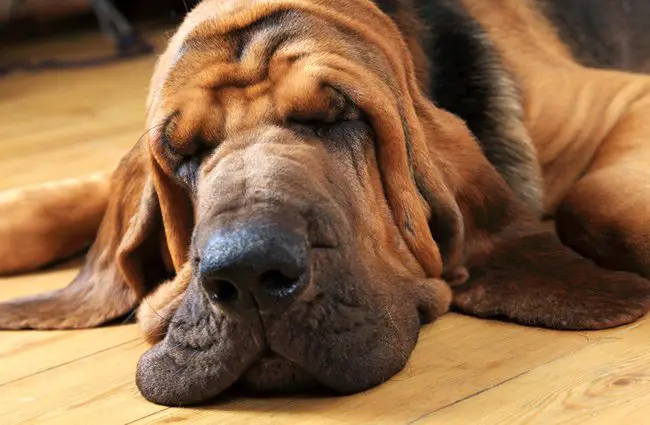
Caring for a Captive Bloodhound: A Zookeeper’s Guide
While Bloodhounds are typically kept as pets or working dogs, a zookeeper caring for one would need to address specific needs to ensure its health and well-being. The principles apply equally to any dedicated owner or handler.
Daily Care and Enrichment
- Diet: Provide a high-quality, large-breed specific dog food, portioned carefully to maintain a healthy weight. Monitor for signs of bloat (gastric dilatation-volvulus), a life-threatening condition common in deep-chested breeds. Feeding smaller, more frequent meals can help mitigate this risk.
- Exercise: Daily, moderate exercise is essential. This includes structured walks, but more importantly, opportunities for mental stimulation through scent work. Setting up scent trails, hiding treats, or engaging in “find it” games will satisfy their innate drive and prevent boredom.
- Grooming:
- Ears: Their long, pendulous ears are prone to ear infections. Regular cleaning and checking for redness, odor, or discharge are critical.
- Skin Folds: The deep wrinkles on their face and neck can trap moisture and debris, leading to skin infections. Daily cleaning and drying of these folds are necessary.
- Coat: While short, they do shed. Regular brushing helps manage shedding and keeps the coat healthy.
- Nails: Regular nail trims are important to prevent discomfort and splayed feet.
- Health Monitoring: Be vigilant for common Bloodhound health issues such as hip and elbow dysplasia, entropion/ectropion (eyelid conditions), and bloat. Regular veterinary check-ups, including preventative screenings, are paramount.
- Socialization: Continue positive socialization with humans and other animals to maintain their gentle temperament.
- Enrichment: Beyond physical exercise, mental enrichment is crucial. Scent puzzles, training sessions, and opportunities to explore new, safe environments with interesting smells will keep a Bloodhound engaged and happy.
What to Avoid
- Lack of Exercise and Mental Stimulation: A bored Bloodhound can become destructive, vocal, and anxious.
- Neglecting Grooming: Failure to clean ears and skin folds regularly will almost certainly lead to painful infections.
- Overfeeding: Obesity puts undue strain on their joints and increases the risk of bloat.
- Harsh Training Methods: Bloodhounds respond best to positive reinforcement and gentle, consistent training. Harsh methods can make them shut down or become fearful.
- Leaving Unsupervised on Scent: Due to their single-mindedness, a Bloodhound on a scent trail can easily wander off and get lost or into danger if not securely leashed or contained.
Fascinating Facts About Bloodhounds
- Unrivaled Scenting Ability: A Bloodhound’s nose is estimated to be 1,000 to 10 million times more sensitive than a human’s.
- Legal Testimony: The results of a Bloodhound’s tracking are admissible in U.S. courts, a testament to their accuracy and reliability.
- “Sleuth” Origin: The term “sleuth,” meaning a detective, is derived from “sleuth-hound,” an old name for the Bloodhound.
- Long Lifespan for a Large Dog: Despite their size, Bloodhounds typically live 10 to 12 years, which is a respectable lifespan for a giant breed.
- The Drool Factor: Their loose jowls and deep flews mean Bloodhounds are notorious for drooling, especially after drinking water or when excited.
- Wrinkles and Ears: The distinctive wrinkles and long ears are not just for show; they help funnel and trap scent particles, enhancing their tracking ability.
- Gentle Giants: Despite their powerful build and intense focus on scent, Bloodhounds are known for their incredibly gentle and patient disposition, making them excellent family dogs when not on the job.
Conclusion: The Enduring Legacy of the Scent Hound
The Bloodhound stands as a magnificent example of nature’s specialization, refined by centuries of human partnership. Its extraordinary nose, coupled with a gentle heart and unwavering determination, has cemented its place not only as an invaluable tool for justice and rescue but also as a beloved companion. From the intricate biology of its olfactory system to its profound impact on human culture, the Bloodhound continues to inspire awe and respect. This remarkable canine reminds us that sometimes, the most powerful stories are told not through words, but through the silent, persistent language of scent.


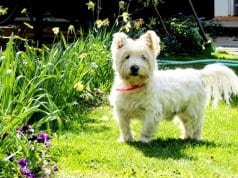

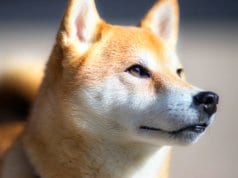

![Red Angus Closeup of a beautiful Red Angus cowPhoto by: U.S. Department of Agriculture [pubic domain]https://creativecommons.org/licenses/by/2.0/](https://animals.net/wp-content/uploads/2020/03/Red-Angus-4-100x75.jpg)

